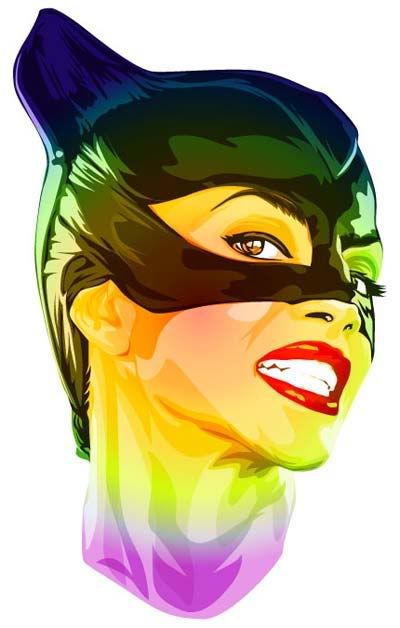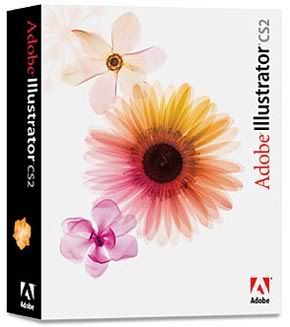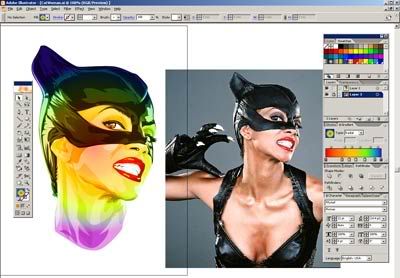Meet The Cat
Latest tracing...."the sexiest cat ever on big screen".

Btw, I wanna talk a bit about tracing image. It's a kinda tricky business but once you knew the clues, it's a easy as flipping your palm.
I used to start tracing by picking a pic and place it into an Adobe Illustrator doc file--FYI, I used Adobe Illustrator CS2. It's the best vector based design software.

The pic is place in a layer which then I lock and make it as a template. This template layer serves as a basic for my tracing.
Then, I create a new layer above the template layer, and begin to trace. There's an important thing to remember, since vector illustration is an object based software, then you make objects and combine into a final design.

In the case of tracing, you must create each elemen of a pic, started by the top-most object, the the lower ones etc. Then when you see the whole parts, you'll get an complete design.
I used to trace the eye first, started by the white spots of the eyes, the pupil, the white part and so on. The tools I used most are the Pen tool for drawing the object, then the Eyedropper tool for picking the perfect colors based the colors of the underlying pic.
For making a more realistic effects of the tracing I made, I employ the transparency feature of the Illustrator CS2. This trick works very well in smoothing various elements of a tracing, like the white spots of the eyes, the light reflections of the faces and stuffs.
Another thing to mention is to use Blending mode to create a different kinda look for the entire design. It's great to explore the various choices of blending mode.
What so great about this Illustrator CS2 is, you can apply different blending mode settings for different objects. Since Illustrator CS2 treats each object as a single sub-layer.
Great isn't it?

Btw, I wanna talk a bit about tracing image. It's a kinda tricky business but once you knew the clues, it's a easy as flipping your palm.
I used to start tracing by picking a pic and place it into an Adobe Illustrator doc file--FYI, I used Adobe Illustrator CS2. It's the best vector based design software.

The pic is place in a layer which then I lock and make it as a template. This template layer serves as a basic for my tracing.
Then, I create a new layer above the template layer, and begin to trace. There's an important thing to remember, since vector illustration is an object based software, then you make objects and combine into a final design.

In the case of tracing, you must create each elemen of a pic, started by the top-most object, the the lower ones etc. Then when you see the whole parts, you'll get an complete design.
I used to trace the eye first, started by the white spots of the eyes, the pupil, the white part and so on. The tools I used most are the Pen tool for drawing the object, then the Eyedropper tool for picking the perfect colors based the colors of the underlying pic.
For making a more realistic effects of the tracing I made, I employ the transparency feature of the Illustrator CS2. This trick works very well in smoothing various elements of a tracing, like the white spots of the eyes, the light reflections of the faces and stuffs.
Another thing to mention is to use Blending mode to create a different kinda look for the entire design. It's great to explore the various choices of blending mode.
What so great about this Illustrator CS2 is, you can apply different blending mode settings for different objects. Since Illustrator CS2 treats each object as a single sub-layer.
Great isn't it?
